Whistling kettles: types, manufacturers overview and selection features
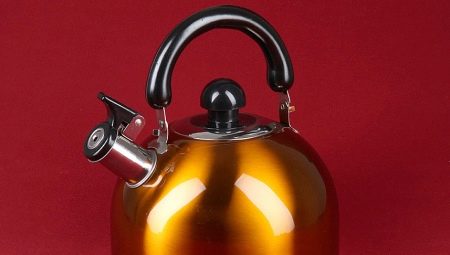
Despite the development of technology, including in the field of kitchen appliances, conventional whistling kettles are still popular. Unlike electric kettles, these products are much more economical in terms of energy costs, moreover, they are more reliable and durable, and the cost of most models is lower than the price of an electric kettle.
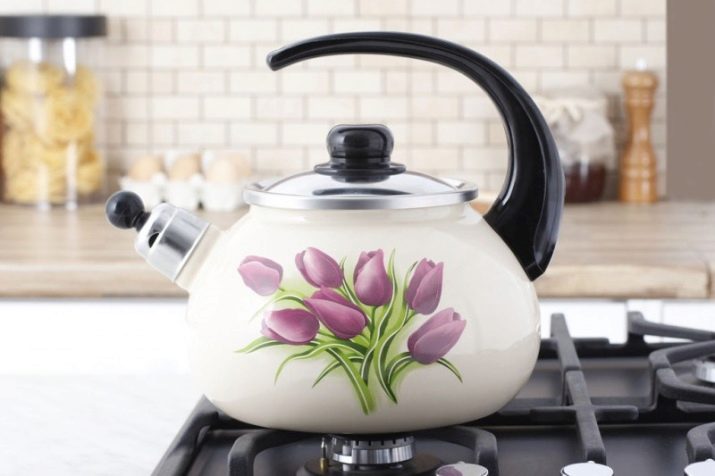
Peculiarities
The main feature of such a kettle is the presence of a whistle, which signals to the owner that the water has boiled. The whistle is so deafening that even a person in the back room listening to loud music will hear it. Unlike analogs without a whistle, these teapots are not only more convenient, but also durable. As you know, when boiling, ordinary products often deteriorate, since an absent-minded owner can forget for a long time that a kettle is on the stove.
The steam coming out of the spout will remain unnoticed; as a result, the kettle is completely smoked and it is easier to throw it away than to put it in order. The loud whistle of the presented products will not allow such a situation.
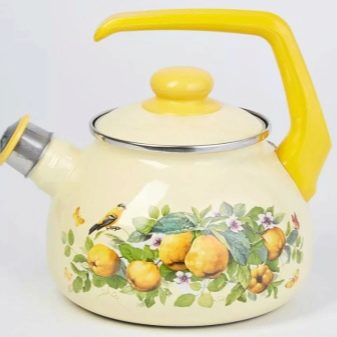
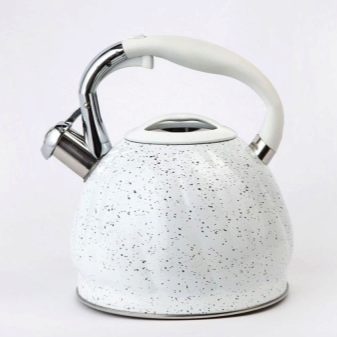
The working principle of the whistle is quite simple. In the first minutes, the water in the kettle heats up to 20-50 degrees. If you open the lid at this moment, you will notice condensation on the walls. When it reaches 80 degrees, bubbles will begin to jump in the water, the liquid will vibrate due to heating from the bottom.
As soon as the water temperature rises to 100 degrees, steam is formed inside the free space, which needs an outlet from a closed container. The steam will gradually escape through the whistle spout, which will emit a sound indicating that the kettle is boiling. As soon as the gas is turned off, the steam pressure in the kettle decreases and the whistling stops.
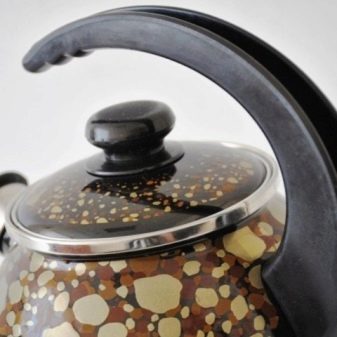
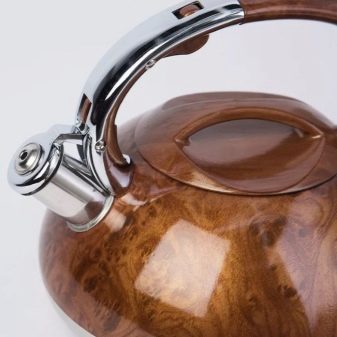
Most often, the whistle, which is usually removable, is made of stainless steel. The melting point of this material is higher than the boiling point of water.
Inside the device there are two thin plates with holes and a small gap between them. Steam under pressure passes between these plates, from which a sound signal is generated.
Materials (edit)
When choosing a whistle kettle in a store, it is important to consider several criteria, among which the choice of material is the main one. The business departments offer several product options.
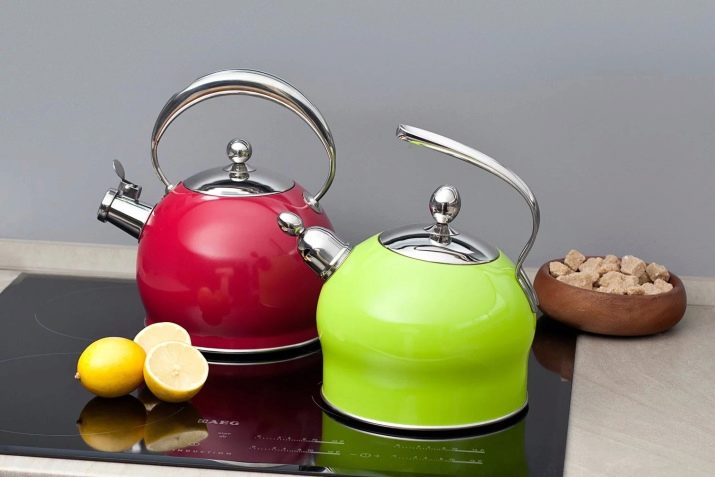
Stainless steel
One of the most reliable specimens. It is a practical product that is highly resistant to high temperatures. Users of stainless steel kettles are also attracted by the absence of emission of harmful substances when heated, which makes the process of boiling water as safe as possible for health. In appearance, such a product looks very aesthetically pleasing, it shines.
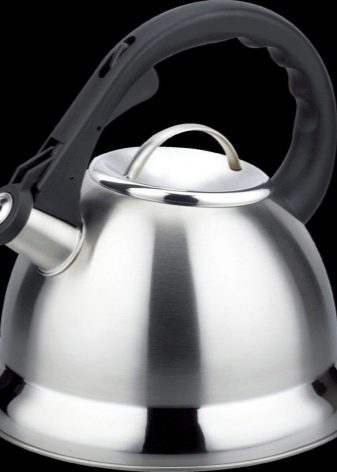
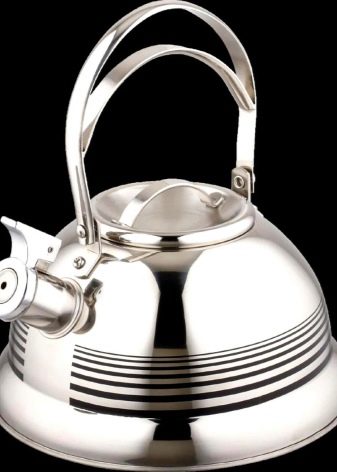
The only problem when using this option is the complicated care. When washing the case, do not use hard sponges, soda, salt, aggressive chemicals, as all these products can damage the surface. When washing, use soft sponges and mild detergents.
Enamelled steel
This option is chosen by lovers of bright, attractive dishes. The surface of the teapot can be orange, beige, yellow, green, red, flowers, patterns, painting, lace and even whole landscapes can be depicted on the walls. However, in terms of quality, this material is still slightly inferior to stainless steel, it is quite susceptible to sudden changes in temperature and mechanical stress.
With careless use, chips appear on the coating, and this already signals that it is better not to use the dishes anymore. When buying an enamel teapot, the hostess should know a few rules for its operation. For example, it is not recommended to empty the container immediately. It is also undesirable to put a boiled kettle in a cold place, otherwise, with a sharp change in temperature conditions, chips and cracks will form on the surface. The enamel can peel off if the pot has a large bottom diameter and the burner is small.
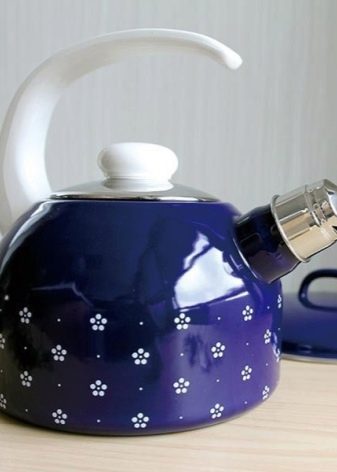
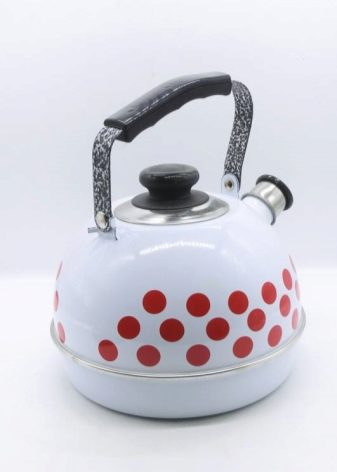
Ceramics
Safe and environmentally friendly option. This piece also attracts the attention of buyers with its amazing design. Ceramic teapots look very light, elegant, noble. However, ceramics itself is a rather fragile material that requires careful handling.
When choosing a ceramic teapot, it is recommended to pay attention to the location of the handle, it should be convenient for the user and located in a safe place to avoid burns. Also, when buying, check how tightly the lid closes. Brittle ceramic can fly out when tilted and shatter. It is recommended to choose models with a double bottom, then you can become the owner of an analogue of a thermos.
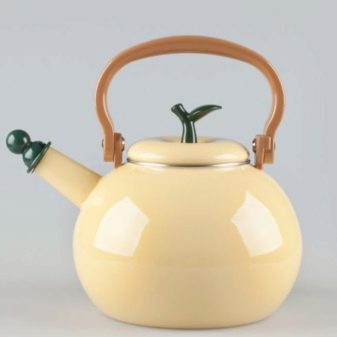
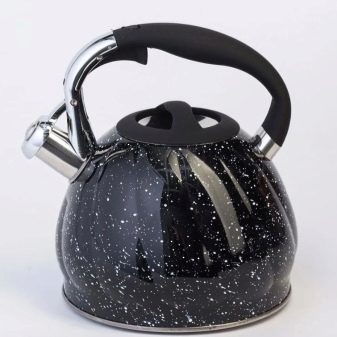
Other materials
Kettles made from other materials are not common. This includes, for example, products made from heat-resistant glass. This is a very aesthetic tableware that will harmoniously fit into any kitchen interior, however, this option is different increased fragility. Are not very popular and cast iron models... By themselves, such instances have a rather large weight, and the water in them boils for a very long time. But this is the most durable option, its service life is practically unlimited.
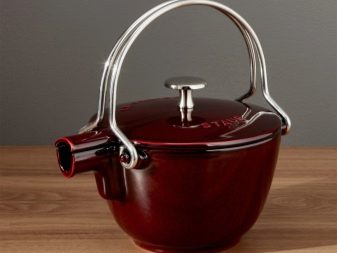
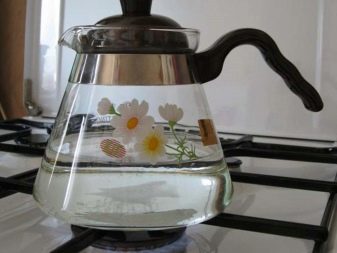
They are becoming less and less relevant in the kitchen and aluminum teapots. The fact is that this material, under the influence of high temperature, reacts with water, and the liquid becomes unsafe for the human body. By the way, whatever material is chosen, it is important to select alloys that do not oxidize on contact with water, since the ingress of toxic substances into tea negatively affects human health.
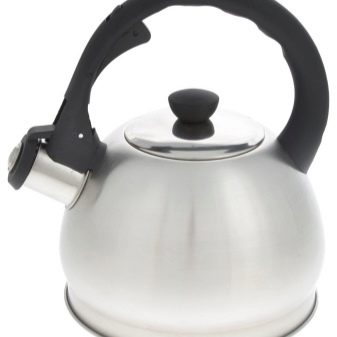
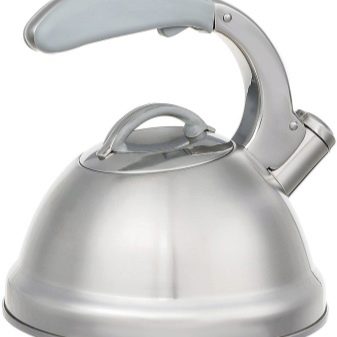
Manufacturers overview
Whistling kettles can be made both in Russia and abroad, while domestic copies are in no way inferior in quality to their foreign competitors. After analyzing customer reviews, you can make rating of the most popular Russian and foreign models.
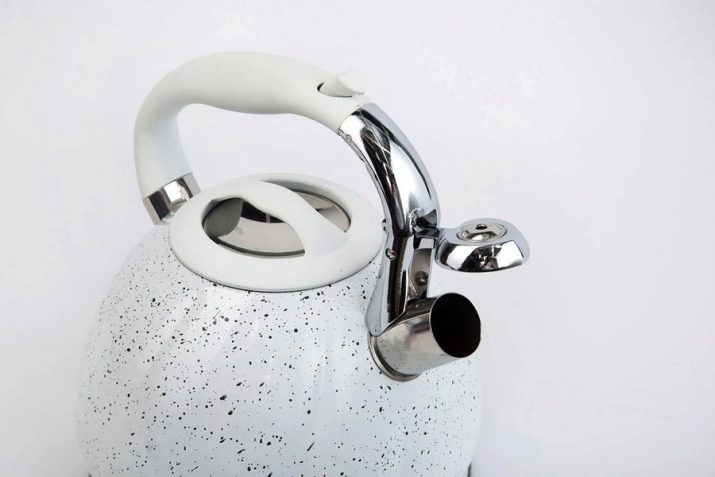
Bekker De Luxe 2.6 L BK-S404
Sample of high German quality. Users are satisfied with the variety of designs; among the models, you can easily choose an option that fits perfectly into the interior. An indicator of the high quality of steel is the presence of the 18/10 marking. This material is resistant to acidic substances, it does not deform when exposed to high temperatures. The pluses include and thick, encapsulated bottom of the kettle, thanks to which the heat is evenly distributed, and the water quickly boils.
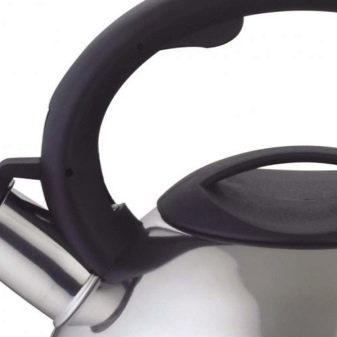
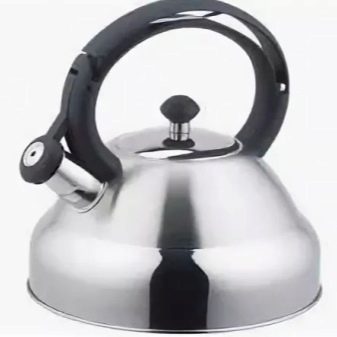
The monolithic non-heating bakelite handle with a lever for opening the whistle also attracts buyers. The product is dishwasher safe and can be used on any stovetop. At the same time, it is quite light in weight and roomy at a reasonable price.
"SteelEmal" Vologda 3 l
Model of a Russian manufacturer with 45 years of experience. The design is made in the style of the national Russian tradition, therefore the teapot is highly appreciated by lovers of Russian culture and classical forms. The body is made of stainless steel with a protective coating, making the product resistant to deformation and mechanical damage.
Particularly noteworthy is the neat glass cover that fits snugly to the body. Its button does not heat up and allows you to open it with your bare hands if necessary. The handle of the kettle is made of heat-resistant plastic, which does not heat up and does not burn your fingers. Can be used on any type of plate.
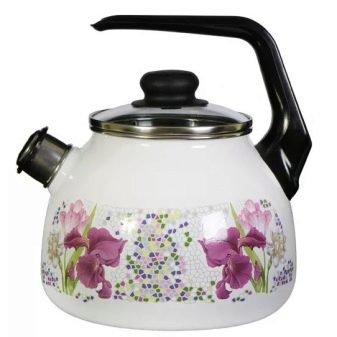
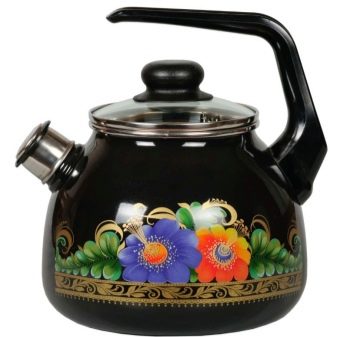
Vitross Maestro 3 l
Products of another Russian manufacturer. This kettle is also made enamelled stainless steel, due to which the specimen is a fairly durable and resistant to chips, scratches and other damage product. This material is almost immune to the formation of corrosion. A light green teapot is popular with housewives who prefer to use brightly colored dishes in the kitchen.
This sample retains the saturation of colors and does not fade for a long time. The lid is made of durable heat-resistant glass that does not break even when knocked. The button on the lid and the pad on the whistle are made of heat-insulating raw materials. Also, buyers are attracted by the handle in this model, which does not heat up during use of the kettle and has an ergonomic shape. The users also appreciated the pleasant price.
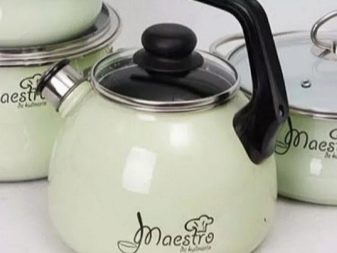
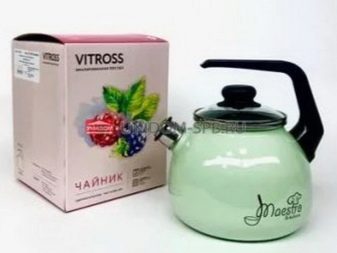
Rondell Walzer RDS-419
Another model popular in Russia is from Germany. The version is made of 18/10 stainless steel and has a matt surface, which creates a modern yet classic design. The ergonomic sophisticated handle makes the image of a voluminous 3-liter kettle light and even airy. It is made of bakelite and therefore does not heat up.
Customers who tend to be too hygienic will love the contactless whistle mechanism. To remove it, you need to press the lever located on the handle, then the whistle will rise by itself and you will not have to touch it with your hands, risking burns. Among the advantages of the model, buyers highlight reliability, safety, resistance to damage, versatility for all plates. Among the shortcomings, it is noted not dishwasher safe.
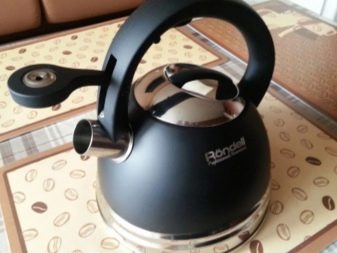
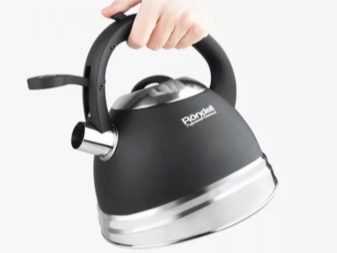
Ejiry
This is a Japanese brand that is characterized by the production of neat shapes in bright colors and floral motifs. Russian housewives love bright, eye-catching dishes and therefore are often fans of Ejiry. This company is interesting for its special production technology, for example, the manufacturer adds powdered sugar to the enamel for added strength.
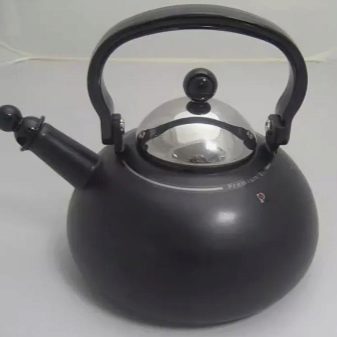
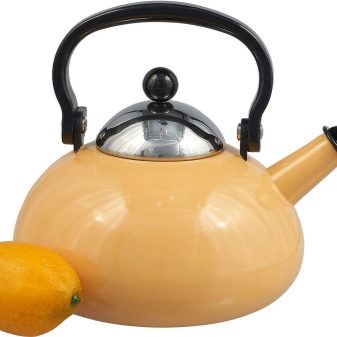
Despite the beautiful fashionable design, Ejiry teapots have drawbacks. So, there is a high price for an enamel case, wound up at the expense of a high-end brand. In Japan itself, the purchase of such a teapot will be much cheaper, so buyers recommend purchasing the product through online stores.
Alpenkok AK-512 3 l
This model belongs to the varieties that change color. The heating indicator is a drawing that is made in black, but at elevated temperatures it becomes colored... The case is made of stainless steel with a decorative white finish. The colored handle is made of plastic with a spout opening device. The product can be used on any kind of plates.
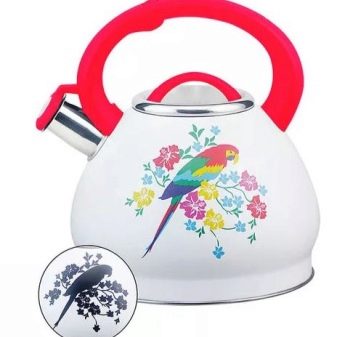
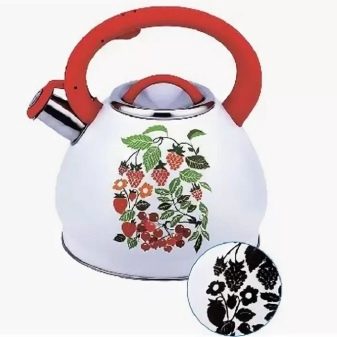
Criterias of choice
When buying a whistle kettle, it is important to pay attention to the stove on which it will be used. Most lucky owners gas stoves. They can boil water in any model of the kettle, but stainless steel or cast iron options retain heat best of all.
Residents of apartments with induction cookers prefer to buy metal kettles. In this case, a kettle with a whistle is a great option, which will warn the owner in time that the water has boiled and will protect the stove from damage. Better to abandon cast iron specimens, since they are heavy and, if used carelessly, can deform the surface of the slab.
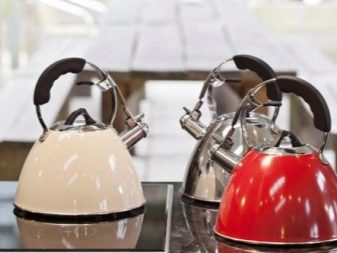
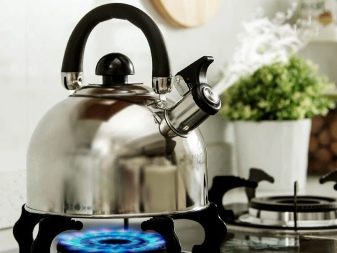
Owners of electric stoves are also free in their choice. However, according to some consumers, in this case it is still better to buy electric kettles, since the electricity consumption will be the same, but a self-switching off kettle is more convenient in operation.
When choosing a teapot with a whistle, pay attention to other points.
- Take your favorite copy in your hand, make sure the handle is comfortable to use. Do not burn your fingers when pouring water.
- Make sure the cover fits snugly against the producteven if the kettle is turned over. Feel free to shake the inverted specimen in the store to make sure the lid is durable.
- Give preference to models with a double or triple bottom, they keep the heat better.
- Check how comfortable the product is by weight. Keep in mind that a kettle filled with water will be much heavier.
- Pay attention to additional features... For example, options with a built-in thermometer are now being offered. These models are suitable for connoisseurs of elite teas, which are important to brew with water of a certain temperature.
- Consider the volume of the cookware. The average cup volume is 250-400 ml. The calculation is made with a margin of 1 liter, if you remember about guests or other options for using boiling water, except for tea. The most popular volume is 2.5 liters. For a family of four, a product with a volume of 3-4.5 liters is suitable.
- For those who do not like to wait long, while the kettle is boiling, it is recommended to give preference to varieties with a large bottom diameter.
- The spout of the kettle should be in the middle. If it is slightly higher or lower, it will make it difficult to use.
- Make sure there is a filter and a valve, which should remove steam.
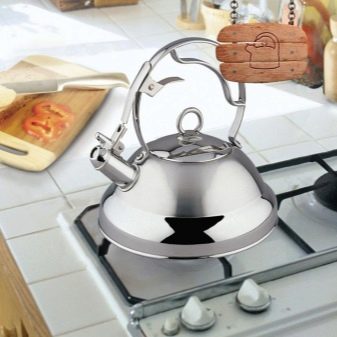
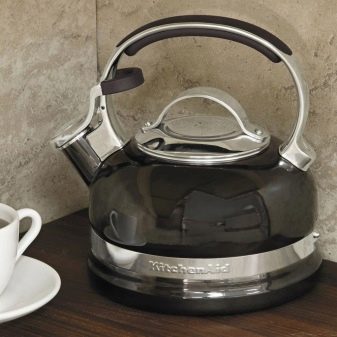
Care rules
Any type of whistling kettle is recommended to be washed and cleaned once a week... To rinse the inside of the container and prevent the formation of limescale, you can dilute vinegar and water in hot water and fill the kettle with the resulting solution. Scale that has already appeared on the walls can be removed diluted with vinegar, lemon peel or juice, baking soda or potato skins. Put any product in a container and boil for a few minutes. Now the scale can be easily removed with a sponge.
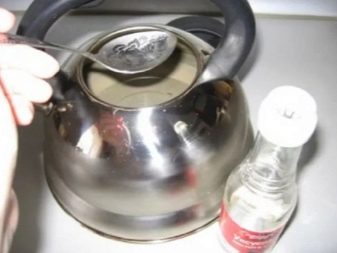
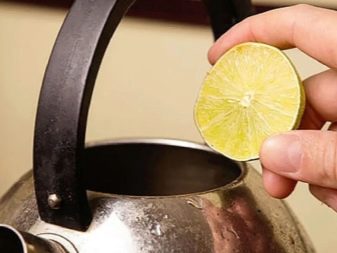
To cope with plaque in the nose, you can re-use baking soda. To do this, pour boiling water to the top of the kettle, add baking soda and leave the product under a terry towel for an hour.Now you need to drain the contents and rinse the inner walls with hot water.
Also popular among folk recipes for cleaning a teapot is marble, which can be placed on the bottom of the kettle - this substance prevents the formation of limescale. Some housewives do not disdain and Coca-Cola, which needs to be boiled in a kettle for half an hour.
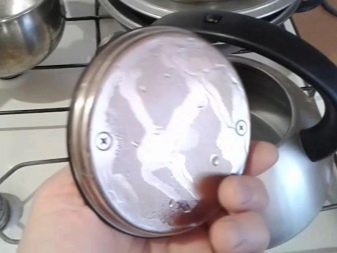
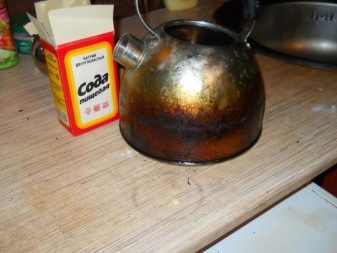
It is not recommended to use chemical agents for cleaning the container, since rinsing it from the inside is quite inconvenient, and poorly washed detergent elements remaining on the walls can get into the body with water and negatively affect human health.
It is allowed to use household chemicals to wash the outer walls of the kettle, but it all depends on the material of the product. For example, the use of abrasive agents for cleaning a stainless steel specimen is unacceptable.
Here are a few more tips for teapot care.
- The whistle does not need to be cleaned as often, therefore, do not forget to remove it before you start cleaning the kettle.
- A large kettle is rather inconvenient to wash outside, therefore it is recommended to use a wide basin to wash the outer walls. You can fill it with water and put the kettle in there. It is more convenient than washing in the sink.
- To remove fat from the walls lovers of folk recipes use citric acid, mustard, cucumber pickle, laundry soap and even toothpaste. However, in the latter case, choose a non-bleaching paste, as this variety contains abrasive substances that can harm the steel body.
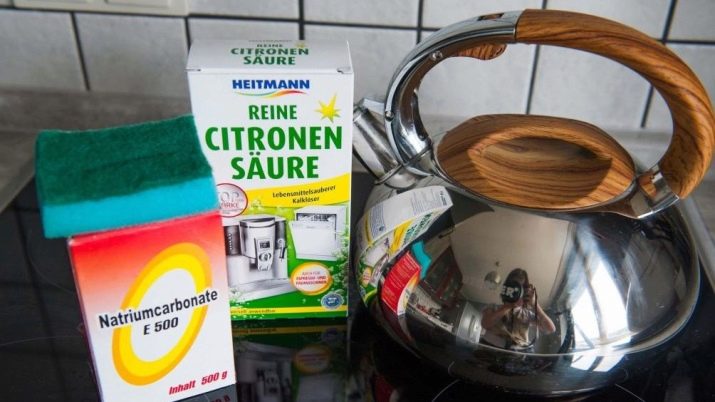
For information on how to descale the whistle kettle, see the next video.








